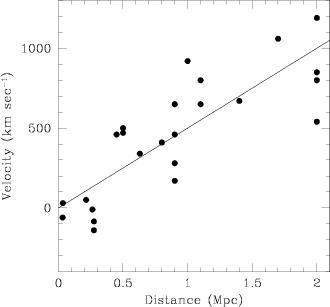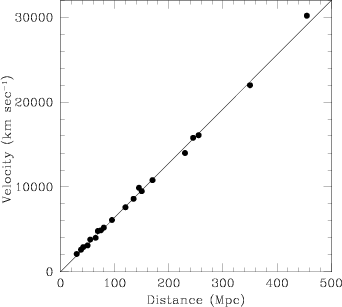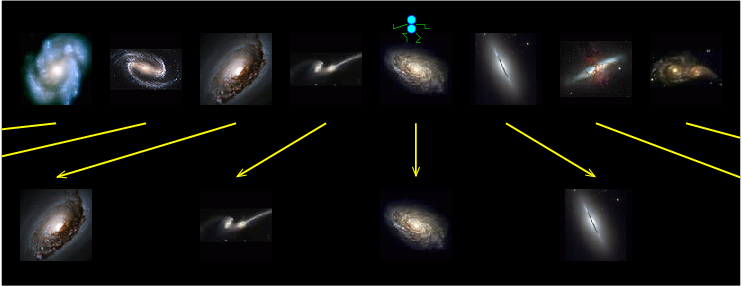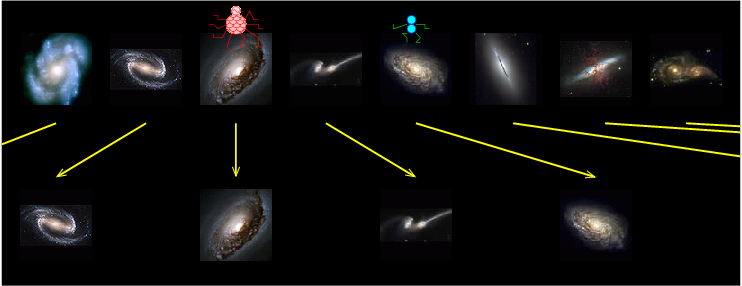 |
- There exist many galaxies beyond the Milky Way.
- They are receding, moving away from us.
- Their velocity of recession is proportional to their distance.
| Hubble's data, drawn from the nearby Universe | Modern data, covering a much larger region |
 |
 |
| [NMSU, N. Vogt] | |
Let us imagine the Universe expanding in size, uniformly.; every part of the Universe expands in the same way. The fabric of space itself is expanding, and the galaxies are carried along like dandelions in the wind. What will this look like from Earth? We will pretend that the Universe is a straight line, with a galaxies spread out all along the line. If the Universe were to expand uniformly, then the space between each pair of galaxies would eventually double. What would this look like?
 |
| The distance between each galaxy increases, while the Milky Way appears to stay in one place. We see nearby galaxies moving only a little way (at a slower velocity), while more distant galaxies appear to travel a great distance (at a higher velocity). [NMSU, N. Vogt & NASA/HST] |
The galaxies close to us did not move very far, so they didn't move very fast. But galaxies that are much further away went a very great distance in the same amount of time. To do this, they must be moving very fast. This is exactly what the Hubble Law shows! Furthermore, aliens living in other galaxies observed the exact same pattern from their galaxies. No matter where you stand, the rest of the Universe appears to be moving smoothly away from your position.
 |
| The distance between each galaxy increases, while the home of our bold, red, eight-legged alien astronomer appears to stay in one place. She sees nearby galaxies moving only a little way (at a slower velocity), while more distant galaxies appear to travel a great distance (at a higher velocity). [NMSU, N. Vogt & NASA/HST] |